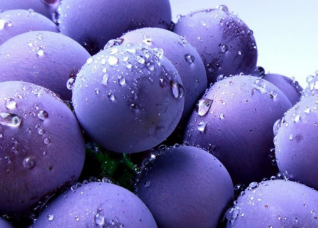
MinerAlert

MinerAlert
Euterpe oleracea
Arecaceae
Açaí berry, Assai Palm, Cabbage Palm, Iwasaí

Açaí berry is a fruit from a palm tree found in South America, mainly in the Brazilian Amazon. Because the tree does not grow outside its natural habitat, and the fresh Açaí berries are very perishable, they are usually available outside Brazil only as a juice (Small, 2012).
The berries
The berries are pressed to make juice or the fruit pulp is made into various desserts.
The berry possesses a pleasant flavor and has important antioxidant and anti-inflammatory properties. Because of this, some nutritional supplement companies have designated the açaí berry as a "super fruit”. In Brazil, this fruit is very popular, and a daily consumption of the berry juice of approximately 300 ml to 2 liters per person is common in various regions of the Amazon (da Silva- Santos et al., 2014; Small, 2012).
In recent years, Acaí (especially as a juice) has become very popular in the United States and other countries due to the high antioxidant content of the fruit.
Acai berry has been touted as a healthy fruit of high nutritional value since it is a source of:
Fruits and vegetables have the capacity to quench free radicals (unstable oxygen molecules that damage our cells) that is directly associated with their content of natural antioxidants. Foods that contain a great amount of antioxidants are considered to have a high “ORAC value”.
ORAC stands for “Oxygen Radical Absorbance Capacity”, and is a method used in the laboratory to measure the antioxidant properties of different plant foods. For this reason, the higher the ORAC value obtained for a certain fruit or vegetable, the higher its capacity to inactivate the noxious free radicals (González-Stuart, 2014).
A laboratory study evaluated the cell growth inhibition activity of açaí berry polyphenolic extract against human colon cancer cells. The authors of the study concluded that the extract possessed anti-inflammatory and cytotoxic actions against colon cancer cells, but no toxicity to normal cell lines. They further suggested that açaí could be effective as natural colon cancer chemo preventive (Dias et al., 2014).
A research study was undertaken by Feio et al (2012), in order to assess whether açaí fruit could be beneficial for individuals with atherosclerosis. The researchers hypothesized that consumption of açaí berry would reduce the development of atherosclerosis by decreasing the absorption and synthesis of cholesterol. The study included rabbits that were fed a cholesterol-enriched diet plus water, or a cholesterol-enriched diet plus an açaí extract for 3 months. A post- mortem analysis of the rabbits treated with açaí showed that they had lower levels of total cholesterol, non-HDL-cholesterol and triglycerides, compared to the rabbits in the control group. The authors concluded that consumption of the açaí extract greatly improved the lipid profile and decreased atherosclerosis (Feio et al., 2012).
Safety/Precautions:
Before you decide to take any medicinal herb or herbal supplement, be sure to consult with your health care professional first. Avoid self-diagnosis and self-medication: Always be on the safe side!